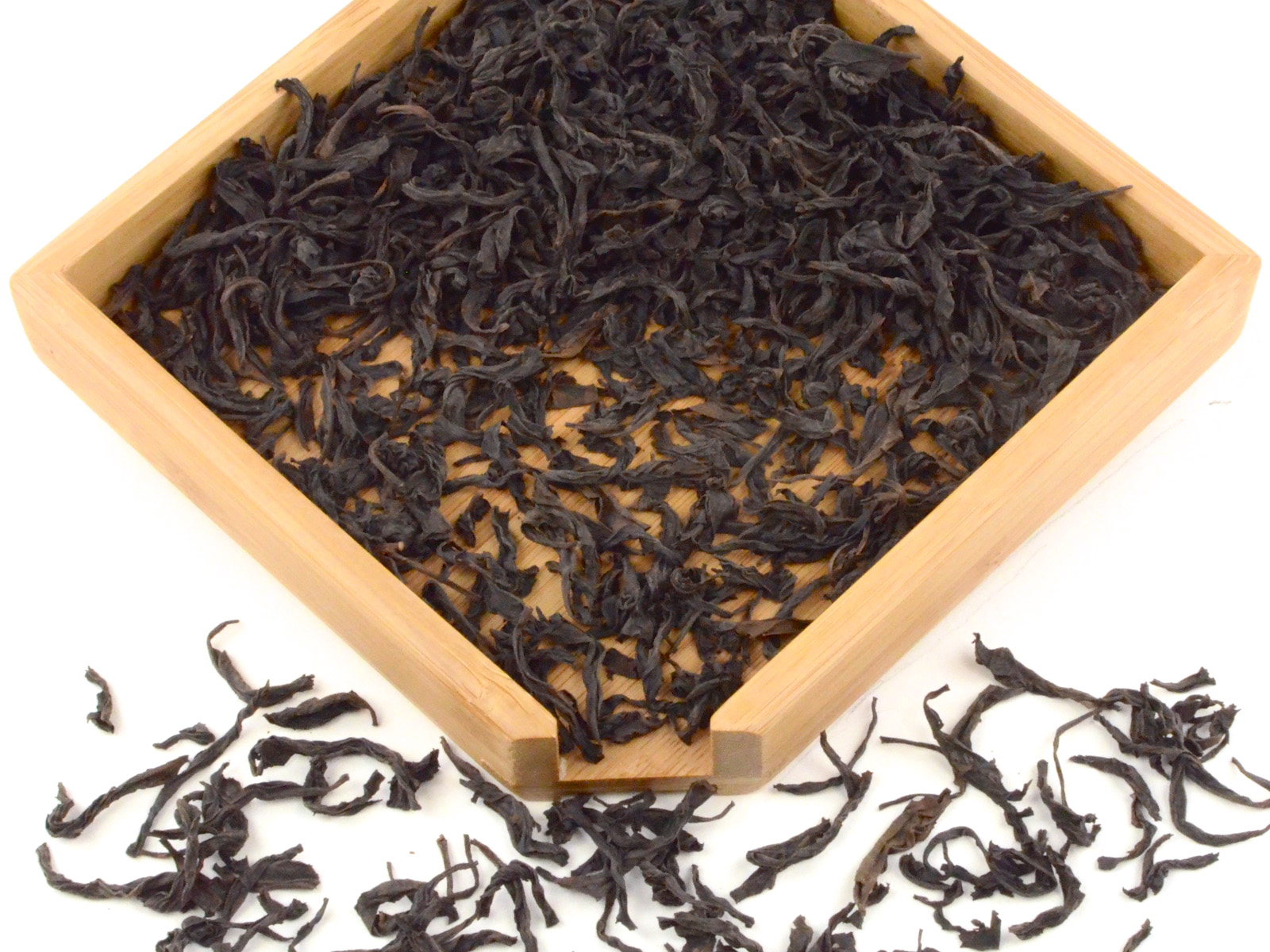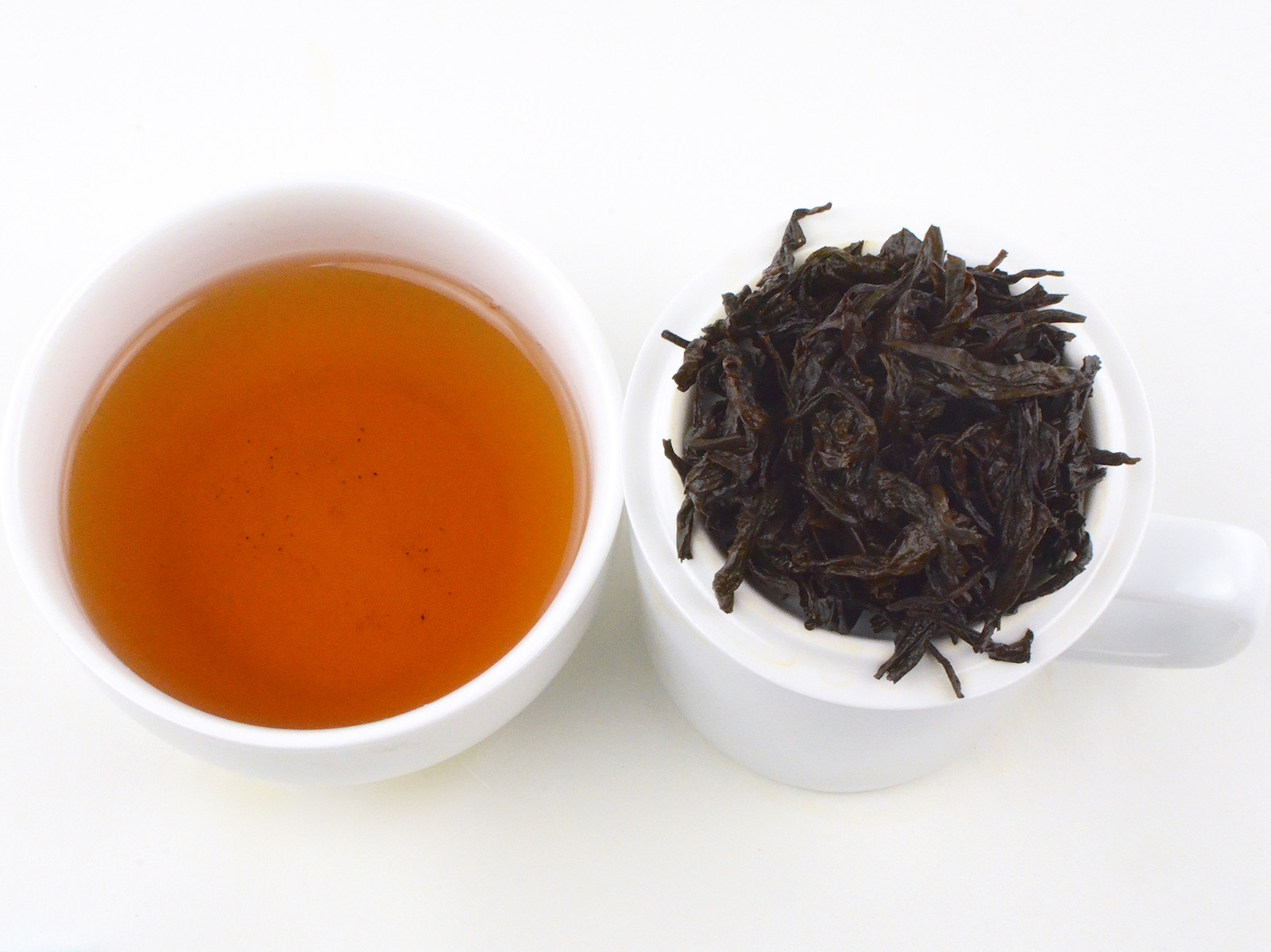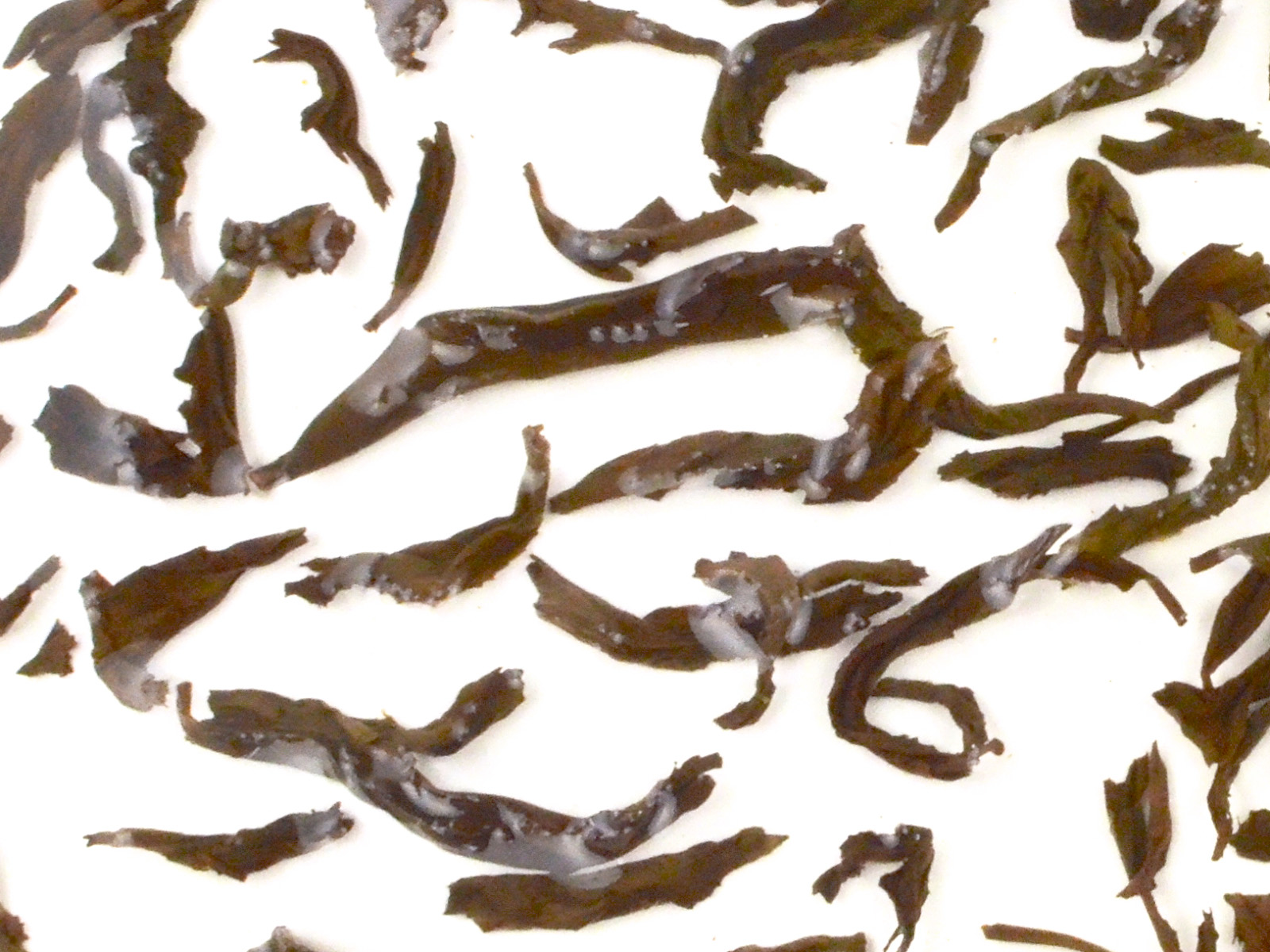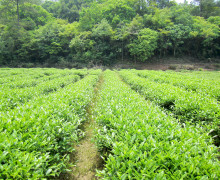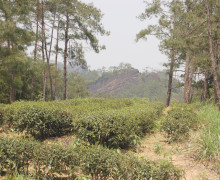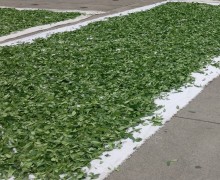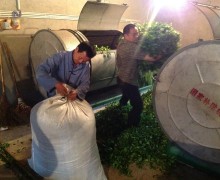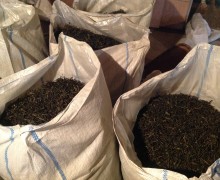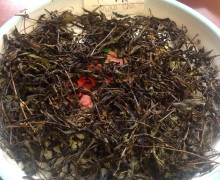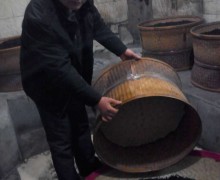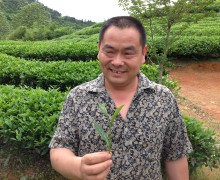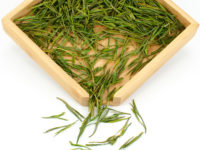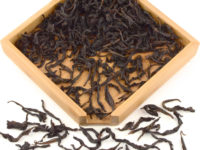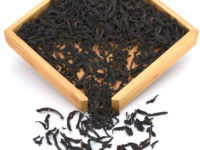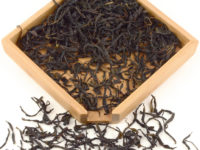Rougui (Cassia Bark)
Rock Wulong Tea 2025
Bold, balanced and complex flavors without heaviness that last through many infusions. A very popular tea cultivar in Wuyishan for its rich flavor with a cassia-like sharpness. This tea is often used in Da Hong Pao (Big Red Robe) blends. An excellent representation of rock wulong tea’s signature character.
- 2024 $13.20
- Tea Origin
- Wuyishan City, Fujian Province, China
- Tea Bush
- Rougui (Cassia Bark)
- Tea Maker
- Zhou Yousheng and Huang Shiying
- Harvest Time
- Late April
- Plucking Standard
- Xiao kai mian, Zhong kai mian
The traditional roast of Rougui tea creates a strong full-bodied flavor with a hint of dark chocolate. The lingering aftertaste is a complex mix of sweet floral sensation and characteristic cassia (cinnamon) dryness. Rougui is a local Wuyi tea bush variety that was selected for its strong flavor, rich aroma, and its hardiness against both cold and hot weather. It is also very easy to cultivate and can yield a large quantity of tea from its many branches. Rougui now occupies approximately a third of all tea gardens in Wuyishan.
From the soil of the Wuyi Mountains (Wuyishan)
Rock wulong tea is grown in the Wuyi Mountains (Wuyishan), a region known for its mineral-rich soil. Wuyishan is the home of wulong tea with the style beginning there over 400 years ago. Botanical surveys through the last few hundred years have always noted the hundreds of varieties of tea bushes in the region. Starting in the 1960s and 1970s, the government in Wuyishan promoted the propagation of two main cultivars: Rougui and Shuixian.
Harvesting fresh tea for making Rock Wulong
Rock wulong bushes are usually harvested in late April or very early May, making it a late picking variety. The plucking standard of the young leaves is usually “zhong kai mian” which means when the last tea leaf of the new shoot opens from the bud and is half the size of the next most mature leaf. “Xiao kai mian” is slightly before this time, when the last leaf of the new shoot is approximately one third the size of the next most mature leaf. Leaves that are too mature will not roll and twist properly. Tea pickers select only the top 3-4 leaves for production. The tea maker knows the exact time to pick the tea, sending workers to the gardens as new leaves start to grow. It takes a great amount of skill to control the quality of tea before it has even started its processing.
Picking begins after the sun rises, and they never pick tea on a rainy day. After about noon, they carry all the fresh leaves back to the factory to wither under the sunshine on top of large bamboo trays or sheets of fabric. The leaves will naturally lose some moisture over 2-3 hours. The leaves are transported inside the factory under shade and placed inside a long wooden rolling machine for 6 hours or more, depending on the humidity that day. Each hour they will rotate the leaves. If the weather is cold, tea makers will blow warm air into the rolling machine to help the oxidation. Increased moisture and temperature encourages the natural oxidation of the tea.
Oxidizing and roasting traditional Rock Wulong tea
Chinese tea makers have a saying “tea maker’s most valuable property is his nose and hands.” This is the most important tool to use when making wulong. Tea makers rely on the smell and feel of the leaves to know how far along in the oxidation process the leaves are. When the leaves have oxidized enough, they are fired in a very hot 210°C (410°F) rolling machine for 7-10 minutes to halt their oxidation. Wulong teas are made up of much larger leaves, meaning they must be fired for longer and at a hotter temperature than green tea to stop the oxidation process and by neutralizing the enzymes that drive it.
After the leaves are fired, they are kneaded with a machine for about 30 minutes. The strength of the machine’s pressure is adjusted to compress the tea into the long twisted shape. The leaves are then dried in an oven for about 45 minutes. At this point, the wulong tea’s mao cha is complete. Mao cha is unfinished tea before any final sorting, de-stemming, and roasting.
Wulong tea mao cha is collected throughout the tea season and finally goes on to finishing in late May. The mao cha is sorted by hand or machine to remove large, unfolded leaves and sprigs, leaving only the dark twisted tea leaves.
Tea typically gets roasted above charcoal two or more times over a span of about two months. Each roasting session is between 7-12 hours, depending on the humidity of the day. The temperature of the first roast is hotter, about 110°C (230°F), but will decrease to around 80°C (176°F) for the final roast. After that, the tea is done, but is very crispy and delicate. Each time after roasting, the workers must be very careful transferring the tea so as not to break it. This long process creates a complex, deeper flavor with a lightly sweet lingering aftertaste.
No chemical fertilizer, pesticide, or herbicide was used in the production of this tea. Click here to read more about our promise to fair trade and the environment.

